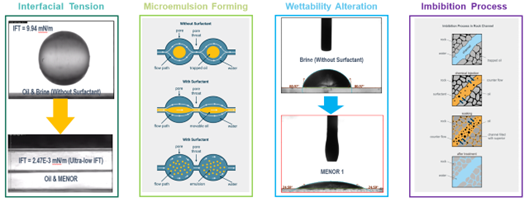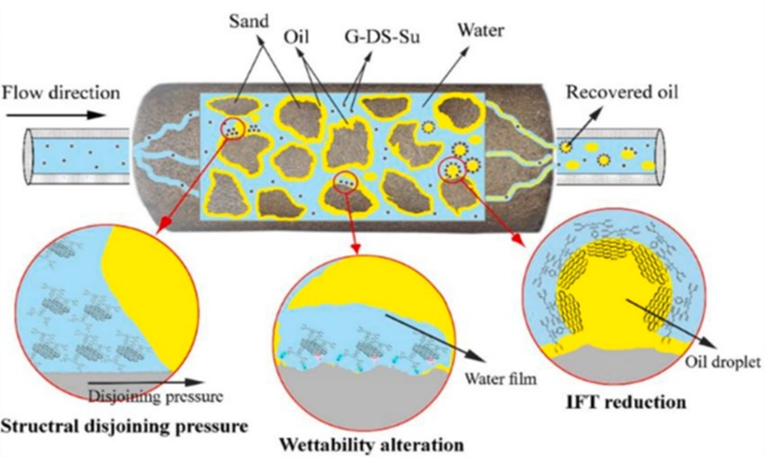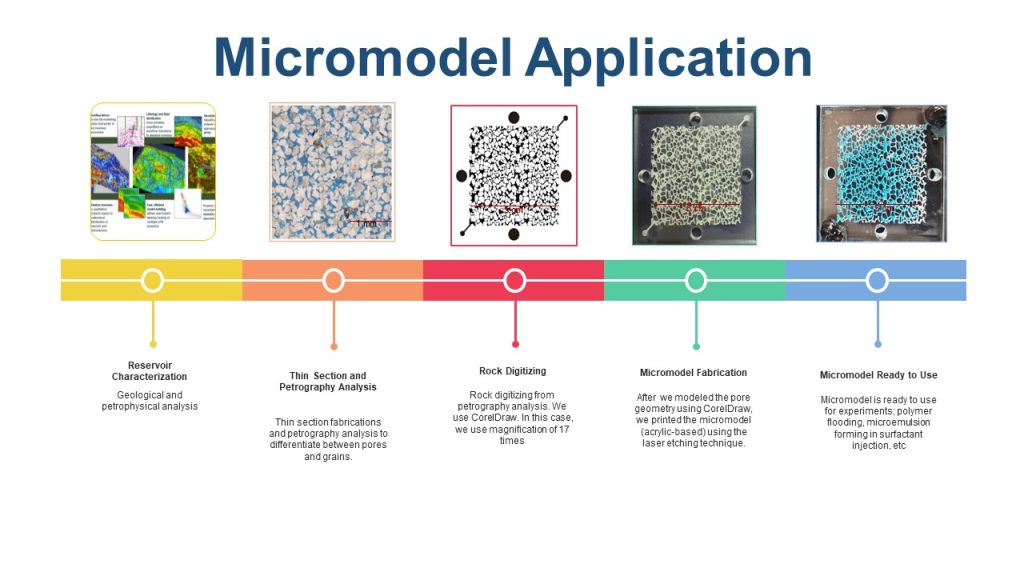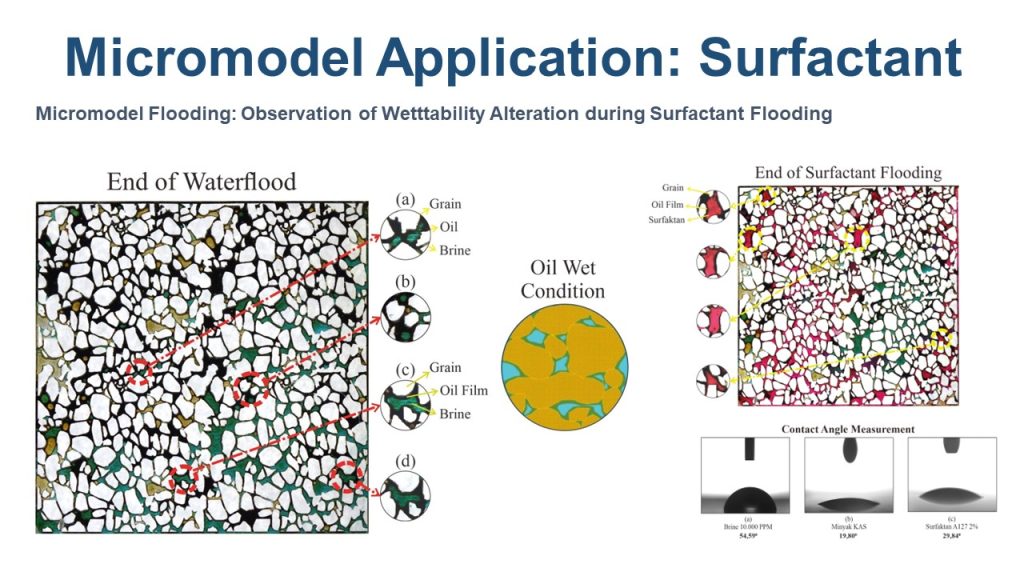a. Background Information
Based on the BP Statistical Review of World Energy 2022 report, oil is still the highest share percentage of global primary energy. Oil companies are constantly trying to increase their oil production along with the increasing demand for hydrocarbon energy. The longer an oil field is produced, the ability to produce oil will decrease. Currently, most oil fields in Indonesia are in the maturation stage. Primary and secondary methods are not efficient enough to produce crude oil. Therefore, it is necessary to carry out an enhanced oil recovery (EOR) method. EOR technology on sandstone and carbonate rocks has been widely used since 1970, including gas, chemical, and thermal injection methods.
b. Objectives
The following are the research objectives of the Enhanced Oil Recovery team:
c. Research Interest
1. Chemical EOR (Alkaline, Surfactant, and Polymer)
Chemical EOR is one of the most effective EOR methods in applications to increase oil recovery in mature fields. The chemical EOR method which is quite popular is the injection of polymers and surfactants. Chemical EOR involves several mechanisms in efforts to increase oil recovery, such as improving the mobility of formation water by adding polymer to injected brine to increase its viscosity. Another Chemical EOR method is surfactant injection which aims to reduce residual oil saturation by reducing the interfacial tension between formation water and oil, as well as wettability alteration.
Surfactants that work on a micro-scale can reduce the dominance of capillary forces in the reservoir so that oil previously trapped in rock pores can be mobilized and oil recovery can be increased. The polymer is needed to reduce the mobility ratio to obtain a pressing process with higher areal and vertical pressing efficiency.

Sumber: Lab EOR ITB – Mekanisme banjir surfaktan pada media berpori
2. Nanotechnology in EOR
The latest technology in the EOR method involves the use of nanoparticles, which play an important role in technological development. Nano EOR is claimed to be able to help improve oil recovery by changing the wettability of the rock and reducing residual oil saturation with a disjoining pressure mechanism. These nanoparticles can be injected alone or combined with surfactants or polymers.

Source: Radnia, et al., 2018 – Schematic of the mechanism of nanoparticles
3. Micromodel
The micromodel plays a significant role in analyzing the mechanism of the EOR method in increasing oil recoveries such as decreasing interfacial tension, wettability alteration, and microemulsion forming. This is because in micromodel testing it is possible to make visual and direct observations of the processes that occur when the chemical is injected into the reservoir, including the fluid-to-fluid interaction and rock-to-fluid interaction.


Source: ITB EOR Lab